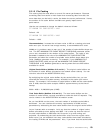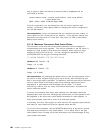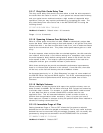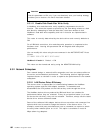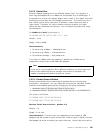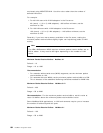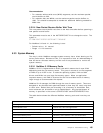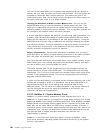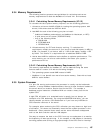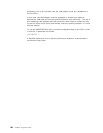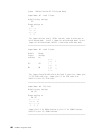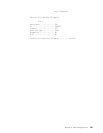5.3.4 Memory Requirements
The following sections present some guidelines for calulating total server
memory requirements for both the NetWare V3.12 and V4.1 environments.
5.3.4.1 Calculating Server Memory Requirements (V3.12)
To calculate the total system memory required, use the following guidelines:
1. Allocate a minimum of 4MB of RAM for loading the operating system, disk
drivers, LAN drivers and the INSTALL.NLM.
2. Add 2MB for each of the following you plan to install:
•
Additional NetWare products(such as NetWare for Macintosh, or NFS)
•
A print server on this server (PSERVER.NLM)
•
Any of the following NLMs:
a. CBLIB.NLM
b. STREAMS.NLM
c. BTRIEVE.NLM
3. Allocate memory for FAT and directory caching. To calculate this
requirement, multiply the amount of your server′s hard disk space (in MB) by
0.008. For example, if you have a total of 1 GB of disk space, multiply 1 GB
by 0.008. This results in a requirement for an additional 8MB of RAM.
4. Add at least 4MB for additional cache buffers to optimize performance. The
more memory you can allot to cache buffers, the better your system′s
performance will be.
5.3.4.2 Calculating Server Memory Requirements (V4.1)
The memory requirements for NetWare 4.1 can be obtained using the same
formula used for version 3.12 with the following changes:
•
The operating system needs 6MB instead of 4MB.
•
NetWare 4.1 can benefit even more from cache memory. Start with at least
6MB for cache buffers.
5.3.5 System Processor
In a pure file serving environment, the processor is usually not the bottleneck.
However, in many NetWare implementations, there are other functions loaded on
the server which can create a heavier load on the CPU. For example, a
database engine loaded as a NetWare NLM can create a heavy load on the
system CPU.
A high CPU utilization on a sustained basis is usually, but not always, an
indication of a CPU bottleneck. By using the MONITOR.NLM utility, you can
identify whether you have a CPU bottleneck or if you have any inefficient or
CPU-intensive resources in the server.
For example, when monitoring the CPU utilization you may observe a high level
of utilization. This does not necessarily mean that the system processor is the
bottleneck. Other potential focus areas are the server hardware subsystems
such as the disk controller and the LAN adapter.
One way to measure the load on the CPU from any one subsystem is to monitor
the frequency of interrupt servicing. If, for example, a LAN adapter is constantly
servicing packets and utilizing a large percentage of the CPU time for interrupt
Chapter 5. Performance Tuning 187



